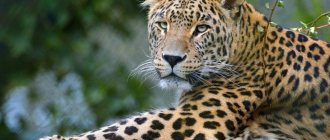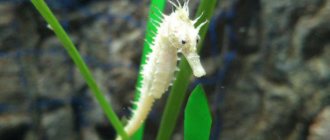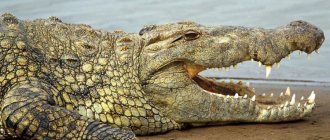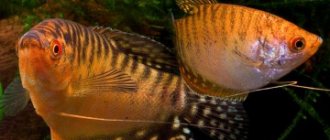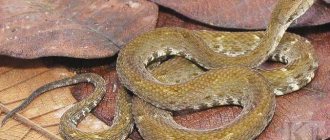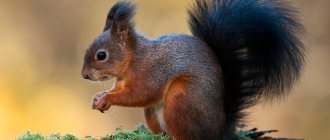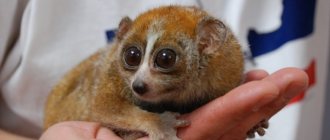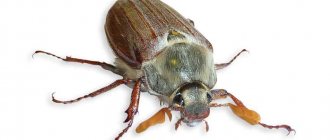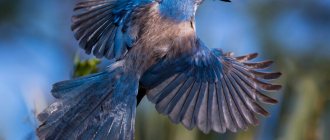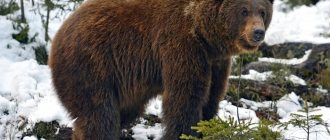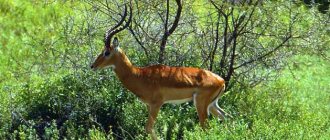When you hear the name of this animal, no other associations arise, since the name fully corresponds to the behavior of the mammal. Their habitat is associated with South America. They are extremely rare in artificial habitats. These animals are considered the most inactive creatures on our Planet, and their inactivity is explained very simply: they have a rather slow metabolic process in the body, and, moreover, the structure of their body does not allow them to be fast.
№1
There are six species of sloths and they come in two families: Megalonychidae (two-toed sloths) and Bradypodidae (three-toed sloths).
Members of the family Bradypodidae (three-toed), almost the same size as an average dog, approximately 58-68 centimeters in length, and a body weight of about 8 kg.
Two-toed animals are slightly larger than three-toed ones, although they have many common features with them.
Lifestyle and nutrition
Sloths are peaceful residents who do not show aggression. If the animal is unhappy, it begins to snore loudly. Otherwise, representatives of the Incomplete-Toothed family are distinguished by their friendliness, both to others and to their relatives. Adults love to be among foliage and fruits, which is what they actually feed on. Mammals drink dew or rainwater, are resilient and easily tolerate damage.
The favorite food of sloths is eucalyptus leaves. Animals can eat such food endlessly. Since the plant is low in calories, it is very difficult to get enough of it. It may take about a month to digest the food. Mammals are very fond of young shoots, juicy fruits, and vegetables. This group of animals is vegetarian.
№3
Although their ancestors lived in North America, modern species live in Central and South America.
Most individuals occupy only a few trees throughout their lives. However, some species, in particular those related to three-toed ones, can live their entire lives on one tree, the one on which they were born.
For the most part, sloths' entire life consists of sleeping and eating. Once a week they come down from the tree to go to the toilet. They also come down from trees to find a female in another tree during mating season.
Sloth: description
Sloths are included in the very extensive suborder Folivora, which is part of the order of edentates. Only two families of sloths have survived to this day: three-toed sloths, which became known in 1821 thanks to the works of D. Gray, and two-toed sloths, described in 1855 by P. Gervais.
Since these two families are similar in appearance, it was previously believed that they were related. Then, as a result of careful testing, it became known that they do not have related genes, so their ancient ancestors had fairly obvious differences. According to experts, the ancient ancestors of two-toed sloths were impressive in size and led a terrestrial lifestyle.
It is believed that edentates appeared on our land back in the Cretaceous period. At the same time, they managed to survive the period of mass extinction, which occurred at the end of this period. The next period was marked by the flourishing of the vital activity of edentates, and the number of their species was tens of times greater than what we see today. It should be noted that the largest sloths of that period were comparable in size to elephants.
In those distant times, these animals lived within South America and had no food competitors, so new species appeared from time to time. After a period of time, South America connected with North America, which allowed sloths to expand their habitat. Some time passed and food competition began, which led to the extinction of some species.
This happened about 12 million years ago and the larger species began to die out first. Then this process affected smaller species, and some species caught humans. This became known as a result of an examination of the remains of these animals, as well as their skins, which were processed. As a result of this inevitable process, only small species managed to survive.
Sloth - interesting facts
Appearance and features
Many characteristics of the surviving species have some differences, although these are minor. The average body size of such animals is within half a meter, and their weight is about 5 and a half kilograms. The coat is characterized by a light brown color. Algae often grows in their fur, which helps sloths camouflage well in the canopy of trees.
The fur is very long and stiff, so only one eyes can be seen on the head, since the rest of the organs are practically invisible due to the fur. In appearance, these mammals resemble monkeys, but are not related to them, since the sloth's closest relative is the anteater.
Sloths have poor eyesight and less acute hearing, but an excellent sense of smell. The structure of their teeth is such that they are devoid of roots and enamel, which is why this order is called edentates. The skull consists of two parts and in one of them the brain is located, with a very small number of convolutions.
The structure of the fingers deserves special attention, since they are quite tenacious and more like hooks. This structure of the limbs allows sloths to feel especially comfortable in the treetops, although they move at a very low speed.
All sloths are united by only one concept - these animals are quite slow. These are the slowest animals on our Planet, and we can say that they are very slow and try to make a minimum of movements: only in case of emergency.
The first person who first described this animal called the sloth the most useless living creature on Earth. Although, as you know, nature is much wiser and smarter than this person, since only one creature on earth is capable of unbalancing living nature - this is man. Therefore, one should not agree with such a rash definition, since many zoo visitors stop for a long time next to the enclosures of these animals to make sure of their uniqueness.
Sloth Habitat
These animals need a lot of warmth, as they have rather slow metabolic processes and low body temperatures. In this regard, their habitat is associated exclusively with warm climatic conditions. For their life activity, these unique creatures chose the expanses of South and Central America. They prefer to stay alone, occupying large areas of impenetrable forest thickets.
The northern boundaries of its habitat run through the territory of Nicaragua, and three-toed animals are not found north of Honduras. From the northern borders, sloths inhabit almost the entire territory south, right up to the northern coast of Latin America.
The boundaries of the southern territories of the habitat pass through the northern regions of Peru. Sloths are also found in countries such as Colombia and Venezuela, as well as northern Brazil. Three-toed sloths have a wider range, as they live in all the territories of the two-toed sloth, as well as far to the south.
In other words, sloths are found almost throughout South America, but this does not mean that there are a lot of animals and they are found at every step. In these territories there are areas where there are practically no sloths.
Interesting to know! Sloths sometimes have to go down to the ground to defecate because, compared to other animals that go to defecate without coming down from trees, they do so exclusively on the ground. Even danger does not stop them, since they can be eaten by various predators, of which there are many.
The descent to the ground takes neither more nor less - a whole half a day, although everything in this world is conditional. If you consider that sloths do this once a week, then half a day is quite a trifle for their life.
What does a sloth eat?
We can safely say that sloths are omnivores. Their diet consists of:
- From leaves and inflorescences of various plants.
- From fruits.
- From insects.
- Of small reptiles.
Their diet is dominated by food components of plant origin, and the food source of animal origin is considered to complement their diet. These animals love cecropia very much, so they happily eat both leaves and flowers. When kept in captivity, care must be taken to ensure that this plant is present in their diet. That is why keeping sloths in zoos is associated with some difficulties. As a rule, animals prefer to feed on young shoots.
They do not specifically hunt insects or lizards, and hunting is not their occupation, but if such food objects are nearby, within reach, the sloth will catch them and eat them. Although this is not always possible for sloths due to their low mobility, so they have to be content mainly with vegetation.
The gastrointestinal tract of sloths is characterized by a very complex structure and is designed to digest various food components. In addition, these animals need to extract the maximum amount of nutrients from very low-calorie foods. Various types of unique bacteria help sloths do this.
The process of digesting food itself takes quite a long time and sometimes takes several weeks. In fact, this is not entirely convenient for the animal, since their stomach can contain a mass of undigested food, amounting to up to 60 percent of their own weight.
But there is also a downside to this coin, since sloths are able to go a long time without eating, compared to other animals that take a lot of time to feed. Moreover, the slow digestion process allows us to minimize the effect of poisons found in some plants.
Behavior and lifestyle
Three-toed sloths prefer to be active during the day, while two-toed sloths prefer to be active at night. They generally stay apart and are extremely rare with their relatives, as they lead a sedentary lifestyle.
If several sloths meet together, they behave very favorably towards each other. They can feed together for a long time in one area or on one tree. They practically do not communicate with each other, which is due to the peculiarities of their life activities. Therefore, they are in the same position for most of the day, regardless of whether there is one individual on the tree or several of them.
These animals sleep for more than half a day and often head down. Sloths move at speeds of up to 3 meters per minute, and when moving on the ground the speed is even lower. When the sloth falls to the ground, its movements are especially awkward and the sloth has difficulty avoiding even the most basic obstacles.
When moving in the treetops, sloths are also not very skilled, especially since they have no muscles. If monkeys hold on to branches and also jump from branch to branch using muscle power, then the sloth simply hangs on it and is held on by very tenacious fingers. In this regard, the animal makes virtually no effort when moving, which saves energy. Unfortunately, such movements are not fast.
For a sloth, this is not a disadvantage, since such movements are considered normal for him. Even chewing food occurs quite slowly, not to mention other movements. It takes a sloth a long time to turn its neck, which can rotate 180 degrees.
The sloth's body temperature is no more than 32 degrees, and during sleep it drops by several degrees. A slow metabolism forces the animal to save its body's strength on every movement, which the animal fully copes with.
He was named after one of the seven deadly sins and for good reason - the Three-Toed Sloth
Reproduction and offspring
As a rule, sloths live alone and can only meet by accident. But, if a female and a male meet, then there is a high probability that they will begin to mate. Two-toed sloths do not have a specific breeding season, so this process can be observed at any time of the year. As for three-toed sloths, their breeding process occurs in the month of July. During this period, they are busy looking for a mate for themselves.
Only the female takes care of the future offspring, and the male leaves his girlfriend long before the cubs are born. After birth, the baby’s task is to hold on to its mother’s fur as tightly as possible. Until the age of two months, the offspring feed on mother's milk, and then slowly begin to switch to feeding on leaves. And so gradually the kids switch to their main diet.
The maturation process can also be delayed, since in some species the offspring become independent by 9 months, while other species carry their cubs for up to six months and feed them milk for up to 2 years. Maybe they would have carried it longer, but babies become too heavy, which requires a lot of strength and energy.
By the age of 3, the offspring reaches the size of an adult animal, and can also mate, recreating their own kind. The average life expectancy in the natural environment is about 15 years, and sometimes more. Being in captivity, when all conditions for normal maintenance are created, a sloth is able to live for almost a quarter of a century.
Important fact! In connection with the peculiarities of the life activity of these animals, it should be noted that they have a small heart, the mass of which is only 0.3 percent of the weight of the entire body. Muscle mass accounts for only 25 percent. According to these characteristics, the sloth is almost 2 times inferior to humans, although humans cannot be called a record holder.
Natural enemies of the sloth
The main enemies of sloths are:
- Jaguars.
- Pumas.
- Anacondas.
- Ocelots.
- Crocodiles.
- Harpies.
In fact, the main danger for sloths lies on the ground, where they rarely go. Most likely, this is the secret of survival of smaller species, since they are able to hang on such a thin branch that no predator can reach the sloth.
Even for those cats that easily climb trees, sloths are quite difficult prey, since they can hang on thin branches for a long time. In addition, sloths are not considered a priority prey for many predators, since their meat is completely tasteless due to the lack of muscle tissue.
Sloths are well aware that they can expect trouble not only on the ground, but also on the lower branches, so they try to hang as high as possible. It should be noted that it is also unsafe at the top and here they can be attacked by harpies. In fact, the color of the coat of sloths, with the presence of green shades, as well as the animal’s inactivity, does not allow many predators to identify the mammal.
Sloths also understand this, so they don’t climb too high, being mostly on the golden mean: neither too low, nor too high. When there is a lot of water and sloths have to swim, a toothy crocodile may be waiting for them here.
People can also be called enemies of these animals, although sloths are not a priority prey for humans. In ancient times, the Indians also hunted sloths, but this hunting never went beyond reasonable actions, and therefore did not threaten their extinction. The Indians ate the meat of these animals, covered their saddles with skins, and their claws served as decorations.
№4
They mate and give birth in trees. When a female is ready to mate, she makes a characteristic sound that tells males in the area that she is ready. If more than one male responds to this call, they will begin to fight each other. Despite the fact that sloths are fairly slow animals, male fights can be quite serious. In the wild, you can find males with scars on their faces and even damaged eyes due to fights during the mating season.
Features of sloths
Of course, such unusual representatives stand out from the rest of the animal world. What are the main features of sloths? Their characteristic feature, inherent in them from birth, is clumsiness and sluggishness in their actions. This behavior has a lot to do with the way sloths eat.
Animals move slowly, carefully considering every movement. They do not often travel through the trees due to their long sleep, and on the ground these mammals are even more difficult to see. It is extremely uncomfortable for them to walk on the ground due to the disproportion in their body structure.
Three-toed sloth
However, sloths really enjoy swimming. In this skill they can compete with many excellent swimmers among mammals. The body temperature of animals is quite low - only 25-30 degrees.
In numerous photographs you can see how a sloth sleeps . Sleeping is indeed one of their favorite activities. To an outside observer, the animals may appear to be extremely tense in their sleeping position. However, this is not the case. These creatures truly enjoy their sleep, their claws firmly clinging to the bark of trees.
№5
The mating season for three-toed sloths usually occurs in late summer and early autumn. Two-toed birds do not have a specific period; they can reproduce throughout the year.
Pregnancy in females lasts from 5 to 6 months. Some species take longer, such as Choloepus hoffmanni (Hoffman's sloth), whose pregnancy lasts about 11.5 months.
Absolutely all species have no more than one baby in a litter.
№6
After birth, the babies cling to their mother's belly and travel with her until they can feed themselves.
But even after they detach from her belly, they are in no hurry to leave her. Usually babies stay with their mother until they are 3 or 4 years old.
As with other animals, females mature faster than males. Female representatives are ready to give birth to offspring already 3 years after birth, while males mature only at 4-5 years of age.
Reproduction
There is no specific time for breeding, as each species of sloth mates at different times of the year. The female carries the fetus for at least six months. Only one baby is always born; the process of birth of the baby itself takes place high on the tree. The young mother attaches herself to a tree with her paws and gives birth to a sloth in an upright position. As soon as the baby is born, it tightly grasps the mother's fur and finds the breast to drink milk. Some cubs may take up to two years to become accustomed to solid food.
№7
Two-toed sloths are omnivores. Their diet includes both fruits and leaves, as well as insects and small animals. Three-toed animals, in turn, are practically herbivores. Their diet mainly consists of leaves.
Despite their family, leaves still make up the majority of their diet. They are very difficult to digest and provide little energy (perhaps this is the reason why animals are so slow).
№8
Despite the fact that these are absolutely defenseless creatures, in general, their population is not threatened by anything except humans, who are massively destroying their natural habitat.
The International Union for Conservation of Nature and Natural Resources (IUCN) rates 4 of the 6 existing species as least dangerous. Bradypus torquatus, also known as the collared sloth, found in the forests of Brazil, is classified as critically endangered by the IUCN. This is, again, caused by human activity, namely mass deforestation.
Another species, Bradypus pygmaeus, also known as the pygmy sloth, found on Escudo Island in Panama, is classified as vulnerable by the IUCN.
Types of sloths
In addition to the three-toed species, the three-toed family also includes pygmy, brown-throated and collared sloths. Let's look at the unique features of each of these species.
Pygmy sloths
This species is distinguished primarily by its miniature size. The height of mammals is only 45-50 cm, and their body weight is less than 3 kg. In most of its features, the dwarf species is very similar to the three-toed representatives.
Pygmy sloth
"Dwarves" also like to sleep, live in trees and move slowly. Probably the only distinguishing feature can be considered the incredibly flexible neck of dwarfs, which provides them with a view of more than 250 degrees.
However, such exclusivity of the cervical vertebrae is practically not needed by dwarfs in everyday life. They live on only one small island and are seriously endangered. On this island they are not in any danger, which allows them to lead a quiet life without fear of attack by predatory animals.
Collared sloths
Collared is another species of the family listed in the Red Book of the Russian Federation. Their habitat is limited to only a small part of the territory of the Brazilian state.
They got their name from the characteristic “rim” of black wool on the back of their heads. This species is distinguished by particularly thick fur, in which various insects live, which, however, do not bother the animal in any way.
Collared sloth
“Collars” are accustomed to leading an extremely sedentary lifestyle. They are distinguished from three-toed animals by their ability to cling to the bark of trees with a “death grip”, preserving it even after death. The sizes of the “collars” reach 70-75 cm and 7-10 kg.
Brown-throated sloths
The brown-throated species is considered the most common in the family. The main characteristics of the species completely coincide with the description of the three-toed representatives. “Brown-throats”, without being saturated with plant food, ensure its extremely slow digestion. They descend to the ground, like other species, only once every 7-8 days. Most of the day is spent sleeping.
Brown-throated sloth with baby
“Brown-throats” got their name from the presence of dark hair on the inside of the neck, in the throat area. The rest of the coat of this species is light. In nature, you can find animals up to 80 cm tall with a body weight of up to 5.5-6 kg.
№10
These are the slowest animals in the world. So slow that they are literally covered with “moss”. The algae Trichophilus welckeri grows on their fur. This is what gives them their greenish tint.
However, it is worth noting that they benefit the animal. They give its brownish-grayish fur a green tint, which serves as a kind of camouflage that protects the animal from predators.
Role in the ecosystem
Sloths live high in nature on ceibas and other trees, so ground predators cannot reach them. For most large birds, the sloth seems large, but not for the American harpy with a two-meter wingspan.
If we talk about why sloths are needed, then it is worth noting that this animal is a vivid example of how in nature, contrary to human reasoning about natural selection, gradual evolution and strict laws of nature, an animal appears that not only behaves like all other normal animals, but also succeeds at it. Thinking about it, we save the omnipotent flying eagles, such perfect tigers and fast cheetahs from death. Meanwhile, sloths, without making any effort, continue to reproduce, laughing at all the other pathetic species that do not understand that food is close and much easier to get than it would seem.
Sloth teaches people that sometimes you should just relax and do nothing. At the same time, you can simply observe the world around you only because this is no less successful evolutionary path of development than that of apes.
№13
Perhaps everyone has seen at least one photograph of a sloth smiling. And how can you not fall in love with this cute little face? But in reality, this is not a smile. It's all about the structure of the facial muscles, which simply creates the appearance of a smile. An animal may have a completely neutral mood, but its appearance will say: “I am happy.”
We also recommend reading: Interesting facts about camels
